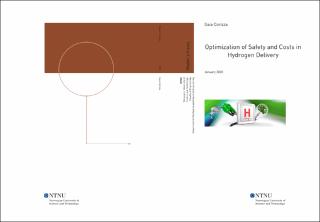| dc.description.abstract | In recent decades, attention has been paid to the improvement of hydrogen technologies as replacement of electric and/or hybrid cars. This can be defined as a green solution as the main product of hydrogen combustion is water. However, it is important to assess the related safety and costs, and reassure public opinion after the accident occurred in Kjørbo, municipality of Bærum (Sandvika), on the 10th of June 2019.
The object of this study is to demonstrate that hydrogen fuel stations are safe and convenient if appropriate measures are taken. The Norwegian district of Østlandet (which is the district involved in the accident) and the nearby areas are taken into account. In the work, the position of the station involved in the accident is examined in order to optimize the transport of raw materials and be cost-effective and efficient in terms of safety and performances. It is, therefore, necessary to diversify the supplying for station typology and study the transport and fuel station risks according to the position and the exposure of the public in different scenarios.
A set of methods is used for the optimization. Quantitative risk assessment of potential accident scenarios is performed by means of the software DNV-GL Safeti 8.22. The economic assessment is performed using the software Exstendsim. The results are compared to appropriate acceptability ranges and used to identify the most important factors to consider for the optimization of hydrogen delivery. | |
